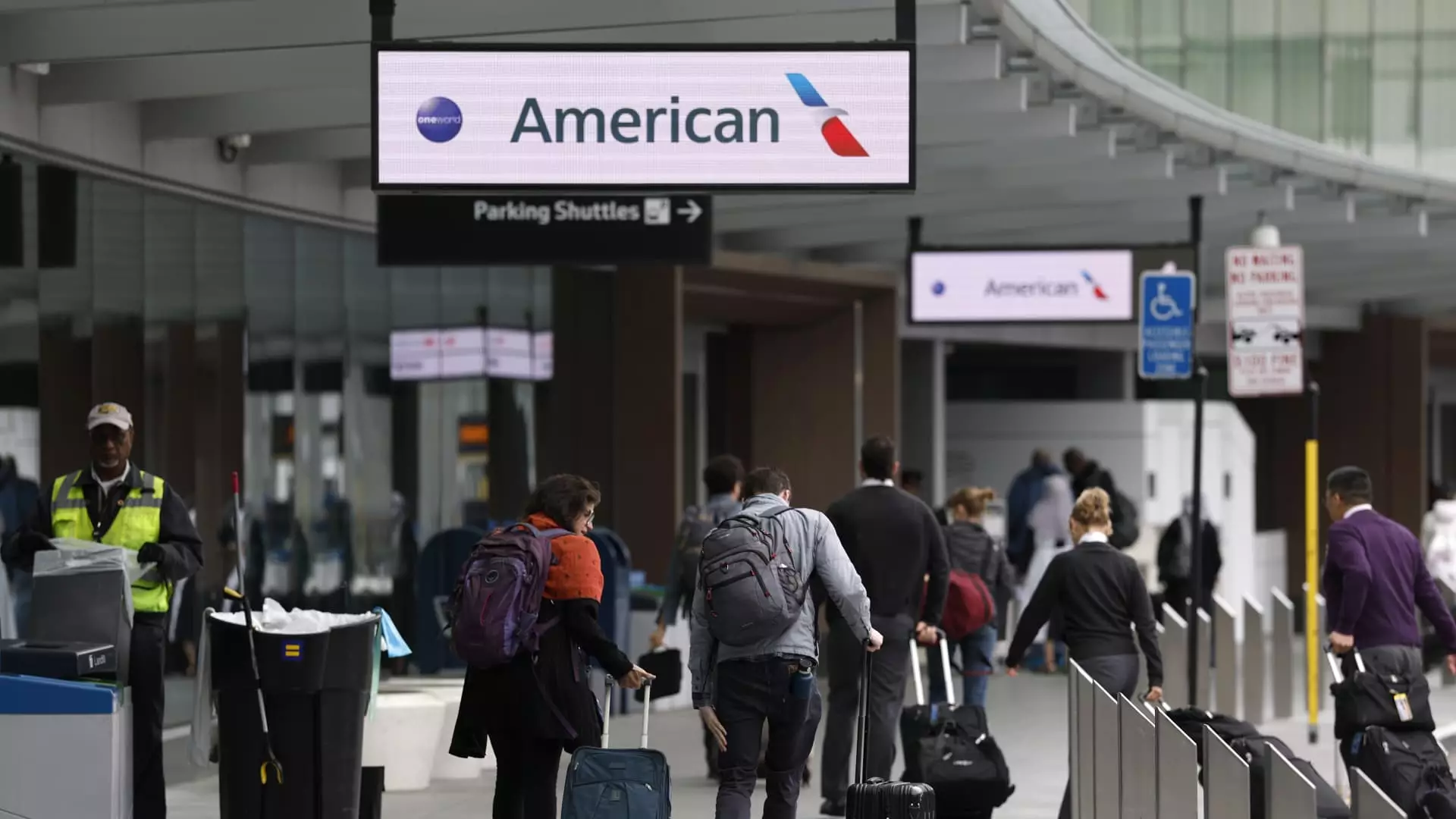In the realm of travel and commerce, few sectors reflect the pulse of economic health as succinctly as the airline industry. Recent revelations from the nation’s top airline executives paint a troubling picture; the appetite for domestic travel is not as robust as anticipated. This warning signals more than just a temporary dip in airline revenues; it hints at deeper, systemic issues in the economy at large, driven by factors like erratic government policies and global market volatility. American Airlines CEO Robert Isom’s pointed remarks about uncertainty reveal the psychological toll that governmental indecisiveness can exact on the consumer’s propensity to spend.
For an industry accustomed to fluctuating fortunes, the overarching anxiety indicates that even as summer approaches—a season typically buoyant for travel—the resurgence of domestic flight demand remains dampened. The crux of the dilemma lies not solely in fewer passengers but in an ever-increasing supply of available seats. The sheer volume of empty seats translates into reduced earnings, creating a precarious environment for airlines grappling with their financial forecasts.
Diminishing Corporate Travel
A critical factor in evaluating the airline industry’s prospects is corporate travel. Businesses often serve as the backbone of airline profitability, with frequent fliers and last-minute bookers willing to pay higher fares. Recent data suggests that this segment is experiencing a noticeable slowdown, which is particularly alarmingly given that it had previously shown signs of recovery. Conor Cunningham, a travel and transportation analyst, aptly observes that in times of uncertainty, the first area businesses typically cut back on is travel expenses. This isn’t merely an anecdotal observation; it reflects a far-reaching trend where economic unpredictability sends ripples through corporate budgets.
Delta’s CEO Ed Bastian noted a stagnation in business travel growth year-on-year—an observation that many in the industry are echoing with concern. It’s undeniable that corporations, often seen as less price-sensitive than leisure travelers, are now exhibiting caution typically reserved for uncertain times. When businesses tighten their belts, the resulting fallout has deep implications for major carriers that depend on these high-margin customers to sustain profitability.
Pricing Pressures and the Value of Certainty
The dynamics of supply and demand are inextricably linked in any marketplace, and the current pressures within the airline industry are no exception. As large airlines contemplate reducing their capacity growth plans, the resulting surplus of seats is cultivating a competitive environment where price slashing becomes the name of the game. The Bureau of Labor Statistics recently reported a 5.3% drop in airfare prices compared to last year—not an encouraging sign for an industry that thrives on healthy margins.
To be sure, lowering prices may attract more passengers in the short term; however, it raises serious questions about long-term sustenance and profitability. Alaska Airlines’ warning about weaker-than-expected demand also underscores the fragile nature of recovery within the industry. CFO Shane Tackett’s comments regarding diminished fare strength highlight a sector that is racing to fill planes while grappling with declining revenue forecasts.
The Impact of Governmental Decisions
There is substantial evidence to suggest that government influence is a significant contributing factor to the malaise currently enveloping the airline industry. From shifting tariffs to cost-cutting measures that impact corporate travel, the uncertainties induced by political maneuvers have a trickle-down effect on all sectors of the economy, particularly one as interconnected with consumer sentiment as air travel. American Airlines’ Isom succinctly stated that the economy relies heavily on certainty to flourish, and it’s hard to dispute this sentiment. Unfortunately, as tariffs fluctuate and political landscapes shift, uncertainty remains the order of the day.
The repercussions are dire; when consumers are hesitant to embark on travel plans due to economic trepidation, families who would normally partake in vacations become less likely to book flights. As characteristics of the average traveler evolve—with a more discernible focus on value and necessity—the long-term ramifications may become evident in the form of shrinking market shares for traditional airlines.
Ultimately, the challenge facing the airline industry is not just about enduring a moment of financial strain; it is about navigating a future shrouded in uncertainty. The interplay of corporate psychology, market dynamics, and governmental effects create a complex tapestry that no airline can ignore. If the roadmap for recovery isn’t laid out soon, we might be witnessing the beginning of a downturn that could leave a lasting imprint on an already volatile industry.

